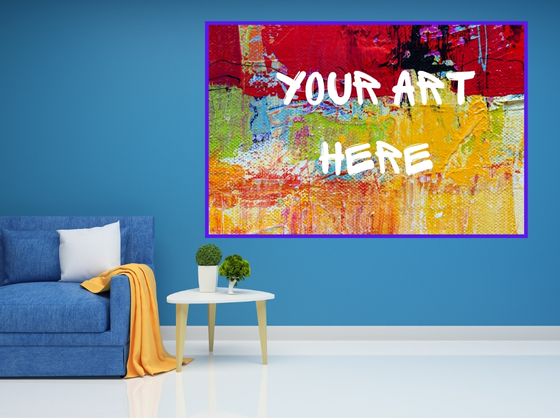The world of fine art proudly rejects the idea of being mere decoration. But the global market for interior design is fully ten times the size of the art market. Can artists really afford to ignore a $660 billion market and the chance to sell more artwork through interior design and people looking to decorate their homes?
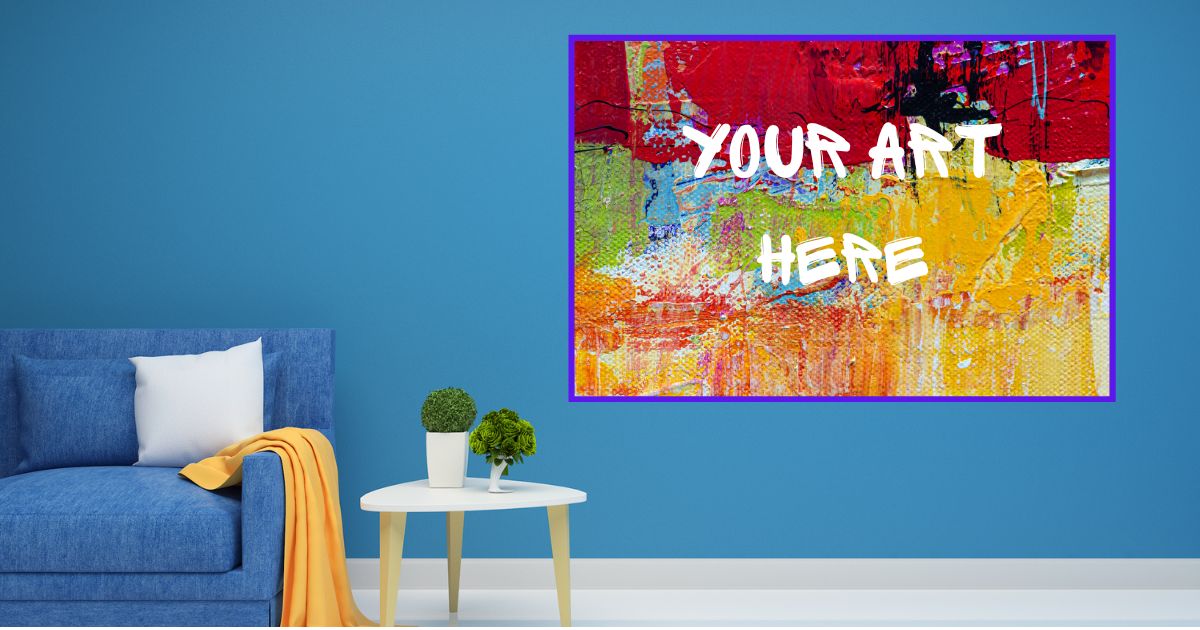
Pretty. It’s not a word artists often want to hear to describe their work. Meaningful, thought-provoking, vibrant, intriguing even difficult. But pretty?
The fact is, for the average homeowner, it’s a word that sums up what inspires them to buy things to adorn their home. And that can mean selling more artwork.
Who hasn’t bought a framed print from a department store or charming little boutique? Many people turn to familiar furniture brands and local shops to find something to adorn their walls. Often, reproductions of famous works sit alongside anonymous non-representational prints. In both instances, the art offers a pop of color, a little personality or a substitute for wallpaper.
So how does an artist sell more work by appealing to the interior design aesthetic? What can you do to make sure that future homeowners choose your work when buying their next sofa or rug?
The good news is that artists don’t need to compromise their work to fit the demands of the marketplace. Instead, you may want to review how you present your work, where you present it, and who you market to. With a few tweaks, you’ll find a whole new audience of potential customers and interior designers ready to buy your work.
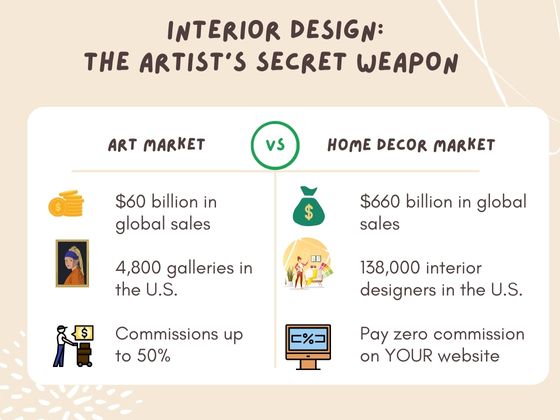
Art and Interior Design: A Long Tradition
If you’re already selling your work as home decor, you’re in good company. The great 18th century painter J.W. Turner reputedly stood behind doors listening to what potential buyers said about his work before undertaking paintings that fit the bill. Pablo Picasso created small ceramic work, instructing galleries they should be sold at an affordable price. Happily, his populist approach fed both his communist principles and his spreading popularity.
More broadly, the Bauhaus philosophy was an entire movement centered around bringing art into the everyday. Many of the 20th centuries most noted artists, including members Paul Klee and Wassily Kandinsky, embraced the movement. Bauhaus artists wanted to reimagine the material world to reflect the unity of all the arts — from painting to sculpture to interior design. Indeed, many pieces of classic Bauhaus furniture straddle the functional and purely sculptural. To this day, Kandinsky’s works remains among the most popular framed reproductions.
If some of the world’s great artists wouldn’t have balked at selling their work in Crate & Barrel, could it also be a smart move for today’s artists?
Why don’t people buy art?
To understand how artists can market themselves to the interior design market, it’s important to understand why people DON’T buy original art.
According to the National Endowment for the Arts, only one in five American adults has ever purchased original art.
That’s a slim share of the total population. Compare that to the number of Americans who’ve bought a couch. Owned a home. Painted a wall. There are several misperceptions that cause people to shy away from original art:
- Art is an Investment: People worry original art it outside their budget.
- Art is a Lifelong Commitment: Buying a “proper paining means binding yourself to lifelong ownership. It can’t just be thrown out with the drapes when you redecorate. In fact, it may even become a family heirloom.
- Art is Snobby: Many people have the false impression that art is too “elite” for their tastes. Or they fear a judgy gallerista will laugh at their ignorance.
…But They Do Buy Home Decor
In truth, people buy art all the time. Reproductions and prints are the fast-growing segment of the art market. In 2021, the global market for rugs and carpets hit $78 billion. People love beautiful things, and they love to nest in homes that feel cozy, chic and infused with their personal style.
So the key is reframing your work as part of their home decor. After all, when someone gazes up at your work from their morning coffee, or has warm feelings of family holidays underneath your print, they’re more likely to buy again and again.
Let’s look at all the ways you can counter people’s misperceptions about original art and sell more work by marrying it to their love of home decor.
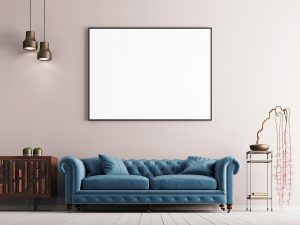
What do people want to buy?
People want art that complements — but doesn’t overwhelm — their interior design. It’s important to keep that practical consideration at the front of your mind both when making your art and later when you consider how, where and to whom you can sell it.
Framed, mass-produced prints and posters
Art featuring whirls of color is popular because it ads flair to a dining room or office waiting room without overpowering the decor or making a strong political or social statement. Artists who work in large abstract paintings should consider limited edition prints of their work. But get the reproduction right. While more expensive than poster art, a limited signed run of prints can please the buyer’s sense of getting something special without being overpowered by having a proper “artwork.” And they may well get comfortable enough to come back for more.
Landscapes and seascapes
Homeowners enjoy images of familiar places that elicit fond memories, particularly from vacations or childhood. If you live near a tourist attraction or have a connection to a charming locale, you might consider selling your work in local boutiques and furniture stores.
Garden Sculptures
People buy 3D work for their garden, but rarely their house. Granted, most of those purchases will be stone woodland creatures and sun dials. But you don’t have to recreate a sleeping stone fox for your work to complement a suburban garden. World-renowned sculptor Barbara Hepworth’s famed Cornwall home features many of her pieces set into a tiny garden of exotic plants. Present your work within a garden setting instead of just featuring large installations and public artwork.

Art that pairs with color trends
Brown and yellow filled the homes of the 1970s, and mauve was an “it” color in the 80s. But today’s homeowners often prefer sedate hues. Shades of white, grey and blue continue to top every annual list of the best-selling paint colors. Fortunately, a neutral color palate gives artists more flexibility in their use of color. Often, homeowners want their art (not their walls) to be the “pop” of color.
For artists who want to sell to the home decorating market, it’s important to stay on top of color trends.
Art that matches their interior design aesthetic
Mid-century modern. Minimalist. Farmhouse. Costal cool and shabby chic. There are dozens of home decor styles, and art that blends beautifully with one may clash with another. Graffiti art on shiplap? Probably not.
Follow art pricing trends
Pricing your art is part science, part psychology. It’s not always the case that the cheapest art sells. Read our art pricing guide to discover how to price your art for maximum profit AND sell your work to casual art lovers decorating their home.
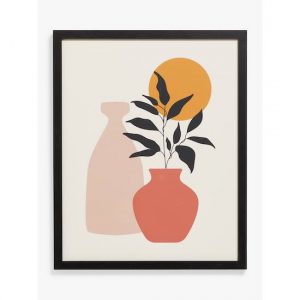
If you’re still wondering how YOUR art can sell in the interior design space, just check out the mass-produced work that’s selling well. How is it priced? Who’s selling it?
Where to sell your art for the home decor market?
Thanks to savvy museum stores like those at London’s Tate Modern and New York’s Museum of Modern Art, art lovers are accustomed to seeing a favorite artwork reproduced on everything from posters and ceramics to carpets and blankets. Art has entered every room in the home.
All is takes is a little creativity and some hustle to capture your small share and sell more artwork through interior design. Here’s some ideas of how to get started.
Build your online store
Stepping into a commercial art gallery still taxes many people’s comfort levels. It can feel like taking an exam – do you understand the work? Do you know the artist? Do you recognize the inspirations? That’s why your website is your very best sales engine.
COVID forced us to shop for everything online, and that’s particularly true of art. Online art sales have skyrocketed in the last decade, and reached a quarter of all art sales in 2021. Did you know that ArtWeb offers a free and easy-to-build website that helps you set up an e-commerce site in minutes.
By positioning your online shop in a more interiors-style atmosphere, people will feel comfortable browsing. Images should include lifestyle shots, so people can see how the work sits on a living room wall, not just in a gallery. Check out our guide for how to photograph your artwork to take beautiful photos that help prospective buyers imagine your art in their homes.
Enter the mass-produced art market for home decorating
Increasingly, artists compete for space on the walls of department stores for limited editions and exclusive works. That includes high-end furniture stores, local boutiques satisfying smaller budgets and even national chains. Paintings enjoy floor space with rugs created from artworks.
In the U.K., one of the most popular sellers of wall prints is department store John Lewis, where prints range from a few pounds to hundreds of pounds. Sales have more than doubled in recent years. In particular, the ANYDAY line sells three abstract, geometric prints for £12. The key to the prints’ success is their versatility: prints have a neutral color palate and pleasing geometric shapes that are likely to go well with a variety of interior design looks.
But beware. While a gallery may charge a commission that reaches 50 percent, and online marketplaces levy fees of 6 to 30 percent, selling the reproduction rights for a print may only make you pennies on each sale. But add that up with the number of prints you might sell, and it could well be worthwhile. Many interiors shops will have buyers who can be contacted to consider your work to join their collection.
Build a relationship with interior designers
In the United States, there are more than 138,000 interior decorators. And all of them are looking for beautiful (and often affordable) art to complement the carpets, lamps and dining tables they’ll help their clients purchase. The American Society of Interior Designers has a directory of its members. If you identify even a dozen in your area whose design aesthetic matches your own, you can build a reliable pipeline of commissions for your work whenever one of your referral partners is redecorating a home.
Ready to Start Selling More Work through Home Decorating?
The best way to start building a niche within the interior design world is to focus on a few quick wins. Don’t expect to see your art reprinted on thousands of carpets in a national furniture retailer overnight. Instead, pop into the charming boutique on your corner, invite a neighborhood interior decorator for coffee, or set up your very own e-commerce platform. That way, you can test the market for your art and build slowly to a long-term goal.
So should your work be more decorative? It’s a personal choice. But don’t ask yourself: is it pretty?

